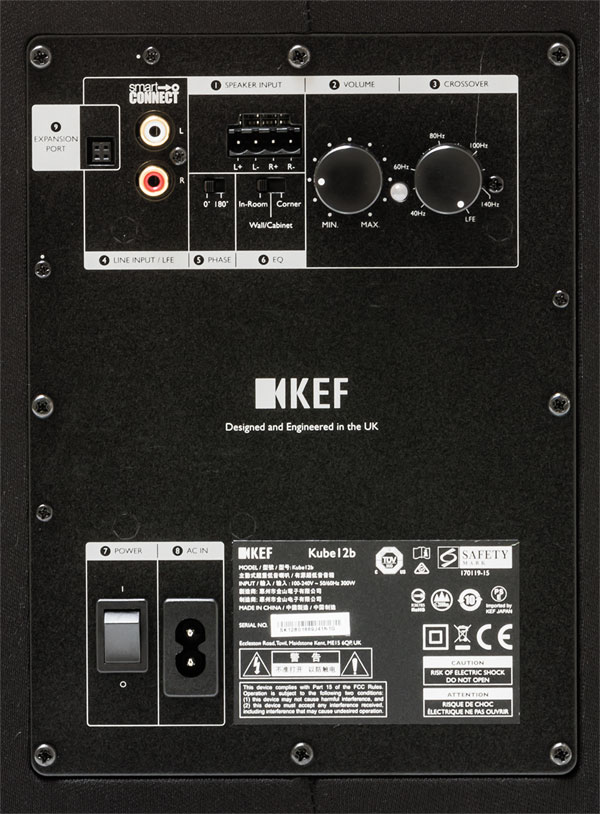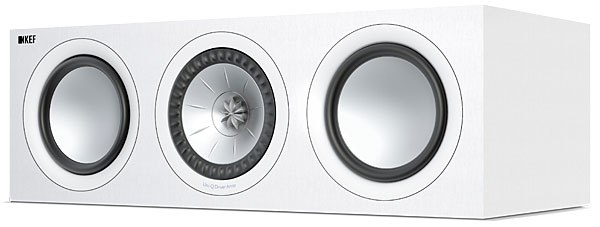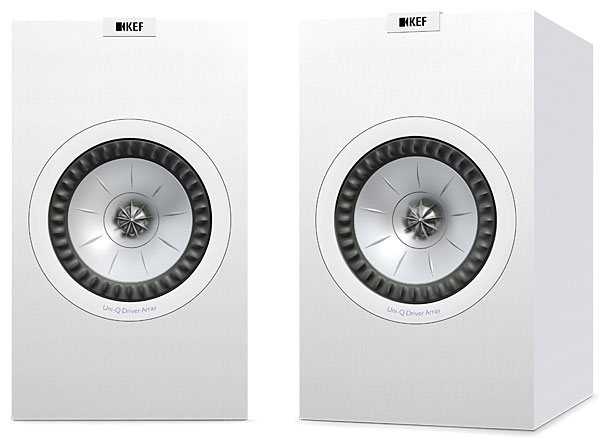KEF Q Series Q350 Speaker System Review Page 2
Precise, Not Fussy
The Q monitor and center create a soundstage with precisely delineated images, and I’d expect no less of a coincident design wielded with the benefit of long experience. But they weren’t bright or unduly fussy. The all-aluminum-diaphragm drivers sounded smooth and well behaved at high volumes. They had good bass response, too, even before factoring in the sub. And that sub had plenty of output, no doubt assisted by its robust amp. Starting with my usual default sub and processor settings, I knocked its level down more than once. Something unusual was going on here and I wished my reviewer’s creed hadn’t forbidden the use of the receiver’s room correction as one variable too many—though I did get interesting results later on when I fooled around with the sub EQ modes.

Pirates of the Caribbean: Dead Men Tell No Tales (DTS-HD Master Audio) had a thick tonal balance that almost tipped over into congestion—though my room’s uncorrected standing wave undoubtedly contributed to it. However, every sub I review is affected by that, and yet it was more problematic this time. A voiceover by Javier Bardem localized heavily in the sub, prompting me to push the sub volume down yet again, which proved to be a good move by the time I got to the battle-heavy Dolby Atmos demos.
They began with The Mummy, a Tom Cruise swashbuckler that uses its Atmos height channels sparingly and not always in the most obvious places. My favorite instance was the low exhalation of air moving quietly around the underground tomb, a subtle effect that benefited enormously from timbre-matched speakers all around. In a scene where the tomb raiders are under attack, the hiss of airborne explosives precedes a satisfying all-channels boom, with force from the 6.5-inch woofers as well as the sub. The soundfield was generously big, notably un-speaker-bound, and not as cut and dried as I might have expected. The overall effect was full and rich, confident in its presentation but not unduly finicky, with a high comfort level.

Comfort level continued to be an asset in the next Atmos demo, as my binge on season 7 of Game of Thrones continued with the last four episodes. Episodes 5 and 6 are bookended by battles featuring Queen Daenerys mounted on a fire-breathing dragon, repelling first a human army, then an army of the dead (though at a terrible price). With the sound mixer opting for aggressive use of the height speakers, often filling all nine of the Denon receiver’s amp channels, the KEF system stood up well to these massive and extended dynamic challenges, maintaining its smoothness as well as its poise at high volumes.
Job, Mick, and the Lizards
Vaughan Williams’ Job orchestral suite and Symphony No. 9 arrived on hybrid SACD from Chandos with surround and stereo mixes. The surround track omits the LFE channel, but that didn’t prevent the receiver’s bass management from directing a pipe-organ blast into the sub, which rose to the thundering occasion. Complementing this high-volume virtuosity was the delicacy displayed in extended solo passages for violin and flugelhorn. At either end of the dynamic scale, the speakers had a superb spatial sense—and while a good multichannel recording makes that easier, there was no mistaking the speakers’ contribution to the seamless integration of instruments and their reflections from the original venue’s walls.

The golden age of the Rolling Stones, the Mick Taylor era, ended with It’s Only Rock ’n Roll (LP). It was delightful to hear the coincident array tracking his fluid guitar parts, with their ever-changing timbres, as they weaved around the monumental rhythm parts and occasional leads of an under-the-weather Keith Richards. Charlie Watts was more prominent than usual in the mix, which could only help; the monitors and sub made his bass drum kick like a mule. It seemed muddy, though. I switched the EQ placement mode from in-room to corner. The sub wasn’t actually in a corner, but now I was getting optimum Charlie; I wished I’d done it sooner.
The self-titled debut of the Lounge Lizards (LP) combines saxophonist John Lurie’s hook-laden quasi-jazz compositions with Thelonious Monk covers and the distinctive atonal guitar playing of Arto Lindsay. The monitors abetted Teo Macero’s clean, ungimmicky production, reproducing a bracing freshness. I liked the way the monitors and sub brought out the subtle tunefulness of Steve Piccolo’s bass playing.
The one thing I haven’t said yet about KEF’s Q Series is what a great value it is, nestled between the step-up Reference line and the compact-satellite-based home theater packages. You can have a 5.1.4-channel Atmos treatment with refinement and a whole lot of woofing and subwoofing for just north of three thousand bucks. At $650 a pair, the Q350 would also serve with distinction in a two-channel starter system—at half the price of the popular LS50 minimonitor. And I’m impressed by how much performance KEF got out of the $700 price of the Kube12b sub. A legend has to be earned. KEF continues to earn it.




























































